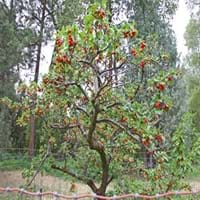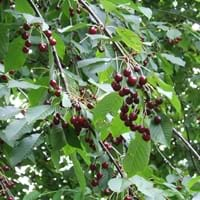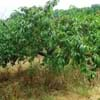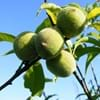Life Span
Perennial
Perennial
Origin
Hybrid origin
Hybrid origin, Europe, Asia
Habitat
Temperate Regions
Temperate Regions
USDA Hardiness Zone
4-8
4-8
Sunset Zone
A2, A3, 1a, 1b, 2a, 2b, 3a, 3b, 4, 5, 6, 7, 8, 9, 14, 15, 16, 17
A2, A3, 1a, 1b, 2a, 2b, 3a, 3b, 4, 5, 6, 7, 8, 9, 14, 15, 16, 17
Habit
Oval or Rounded
Upright/Erect
Flower Color Modifier
Bicolor
Bicolor
Fruit Color
Red, Dark Red
Red, Dark Red
Leaf Color in Spring
Dark Green
Dark Green
Leaf Color in Summer
Dark Green
Dark Green
Leaf Color in Fall
Dark Green
Dark Green
Leaf Color in Winter
Light Green
Light Green
Leaf Shape
Simple lobed or unlobed
Simple lobed or unlobed
Plant Season
Spring, Summer
Spring, Summer, Fall
Sunlight
Full Sun, Partial Sun
Full Sun, Partial Sun
Growth Rate
Medium
Medium
Type of Soil
Loam
Clay, Loam, Sand
The pH of Soil
Acidic, Neutral
Acidic, Neutral, Alkaline
Soil Drainage
Well drained
Well drained
Bloom Time
Early Spring, Spring
Spring
Tolerances
Drought
Drought
Where to Plant?
Ground
Ground
How to Plant?
Semi-hardwood and hardwood cuttings
Semi-hardwood and hardwood cuttings
Plant Maintenance
Medium
Medium
Watering Requirements
Keep ground moist, Use Mulches to help prevent water loss during hot and windy weather
Keep ground moist, Use Mulches to help prevent water loss during hot and windy weather
In Summer
Lots of watering
Lots of watering
In Spring
Moderate
Moderate
In Winter
Average Water
Average Water
Soil pH
Acidic, Neutral
Acidic, Neutral, Alkaline
Soil Type
Loam
Clay, Loam, Sand
Soil Drainage Capacity
Well drained
Well drained
Sun Exposure
Full Sun, Partial Sun
Full Sun, Partial Sun
Pruning
Remove damaged leaves, Remove dead branches, Remove dead leaves
Remove damaged leaves, Remove dead branches, Remove dead leaves
Fertilizers
All-Purpose Liquid Fertilizer
All-Purpose Liquid Fertilizer
Pests and Diseases
Birds
Birds
Plant Tolerance
Drought
Drought
Flower Petal Number
Single, Double
Single, Double
Foliage Texture
Medium
Medium
Foliage Sheen
Glossy
Glossy
Allergy
Anaphylaxis, gastro-intestinal problems, Itchiness, Skin irritation
Anaphylaxis, gastro-intestinal problems, Itchiness, Skin irritation
Aesthetic Uses
Beautification, Bouquets, Informal Hedge, Landscape Designing, Showy Purposes, Wild gardens
Beautification, Bouquets, Informal Hedge, Landscape Designing, Showy Purposes, Wild gardens
Beauty Benefits
Not Available
Not Available
Environmental Uses
Air purification
Air purification
Medicinal Uses
anti-inflammatory, Anti-oxidant, Gout, Insomnia, Soothing and relieving pain
anti-inflammatory, Anti-oxidant, Gout, Insomnia, Soothing and relieving pain
Part of Plant Used
Flowers, Fruits
Flowers, Fruits
Other Uses
Air freshner, Beneficial species for attracting pollinators, Cake, Edible syrup, Oil is used in perfume, soaps, creams, etc., Used to make juice
Air freshner, Beneficial species for attracting pollinators, Cake, Edible syrup, Oil is used in perfume, soaps, creams, etc., Used to make juice
Used As Indoor Plant
No
No
Used As Outdoor Plant
Yes
Yes
Garden Design
Edible, Fruit / Fruit Tree, Mixed Border
Edible, Feature Plant, Fruit / Fruit Tree
Botanical Name
PRUNUS cerasus
PRUNUS cerasus 'Northstar'
Common Name
Pie Cherry, Sour Cherry, Tart Cherry
Northstar Tart Cherry, Pie Cherry 'Northstar'
In Hindi
Sour cherry
आलूबालू
In German
Sauerkirsche
Northstar Tart Cherry
In French
Prunus cerasus
Northstar Tart Cherry
In Spanish
Prunus cerasus
Cereza
In Greek
Sour cherry
Northstar Tart Cherry
In Portuguese
Ginja
Northstar Tart Cherry
In Polish
Wiśnia pospolita
Northstar Tart Cherry
In Latin
Prunus cerasus
Northstar Tart Cherry
Phylum
Tracheophyta
Magnoliophyta
Class
Magnoliopsida
Magnoliopsida
Clade
Angiosperms, Eudicots, Rosids
Angiosperms, Eudicots, Rosids
Tribe
Not Available
Not Available
Subfamily
Not Available
Not Available
Number of Species
Not Available
Season and Care of Sour Cherry and Northstar Tart Cherry
Season and care of Sour Cherry and Northstar Tart Cherry is important to know. While considering everything about Sour Cherry and Northstar Tart Cherry Care, growing season is an essential factor. Sour Cherry season is Spring and Summer and Northstar Tart Cherry season is Spring and Summer. The type of soil for Sour Cherry is Loam and for Northstar Tart Cherry is Clay, Loam, Sand while the PH of soil for Sour Cherry is Acidic, Neutral and for Northstar Tart Cherry is Acidic, Neutral, Alkaline.
Sour Cherry and Northstar Tart Cherry Physical Information
Sour Cherry and Northstar Tart Cherry physical information is very important for comparison. Sour Cherry height is 300.00 cm and width 300.00 cm whereas Northstar Tart Cherry height is 180.00 cm and width 240.00 cm. The color specification of Sour Cherry and Northstar Tart Cherry are as follows:
Sour Cherry flower color: White
Sour Cherry leaf color: Dark Green
Northstar Tart Cherry flower color: White
- Northstar Tart Cherry leaf color: Dark Green
Care of Sour Cherry and Northstar Tart Cherry
Care of Sour Cherry and Northstar Tart Cherry include pruning, fertilizers, watering etc. Sour Cherry pruning is done Remove damaged leaves, Remove dead branches and Remove dead leaves and Northstar Tart Cherry pruning is done Remove damaged leaves, Remove dead branches and Remove dead leaves. In summer Sour Cherry needs Lots of watering and in winter, it needs Average Water. Whereas, in summer Northstar Tart Cherry needs Lots of watering and in winter, it needs Average Water.





